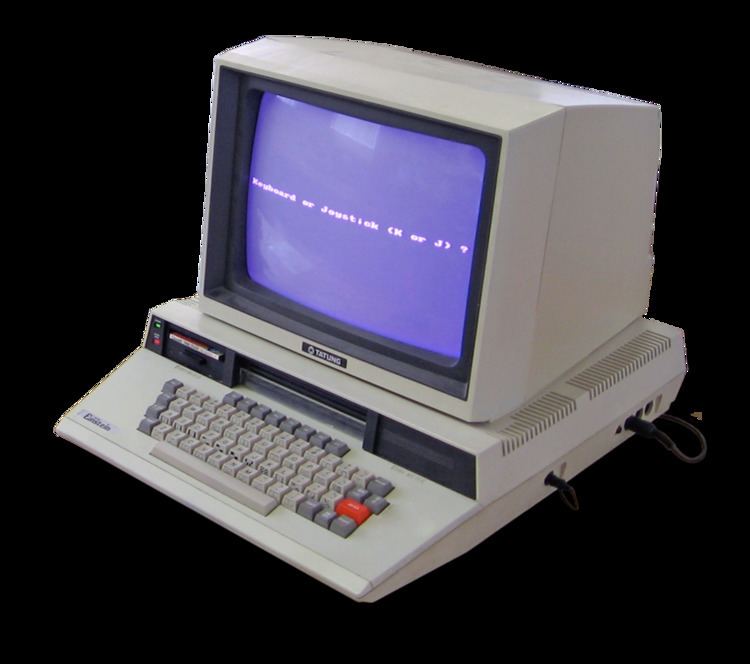Introductory price £499 Operating system | Type Professional Computer | |
 | ||
Release date 1984; 33 years ago (1984) | ||
The Tatung Einstein was an eight-bit home/personal computer produced by Taiwanese corporation Tatung, designed in Bradford, England at Tatung's research laboratories and assembled in Bridgnorth and Telford, England. It was aimed primarily at small businesses.
Contents
History
The Einstein was released in the United Kingdom in the summer of 1984, and 5,000 were exported back to Taipei later that year. A Tatung monitor (monochrome or colour) and dot matrix printer were also available as options, plus external disc drives and an 80 column display card. It was also capable of emulating the Spectrum 48k with the "Speculator" addon.
More expensive than most of its rivals, the Einstein was popular with contemporary programmers but was commercially unsuccessful.
A later, revised version, called the Tatung Einstein 256 suffered a similar fate.
Design
The machine was physically large, with an option for one or two built-in three-inch floppy disk drives manufactured by Hitachi. At the time, most home computers used ordinary tape recorders for storage. Another unusual feature of the Einstein was that on start-up the computer entered a simple machine code monitor, called MOS (Machine Operating System). A variety of software could then be loaded from disk, including a CP/M-compatible operating system called Xtal DOS (pronounced 'Crystal DOS', created by Crystal Computers in Torquay), and a BASIC interpreter (Xtal BASIC). Thanks to the reliability of the machine, and ample memory, the machine proved useful by many software houses to use for programming, and then porting the code to the machines they were made for, namely the Spectrum 48k, Amstrad CPC, and Commodore 64. Eventually it was superseded by the PC and Atari ST as the development systems of choice.
The follow on machine, the Einstein256, basically was the same as the original, with improved video (Yamaha V9938) and a more slimline black case.
Technical specifications
Like the MSX specification
